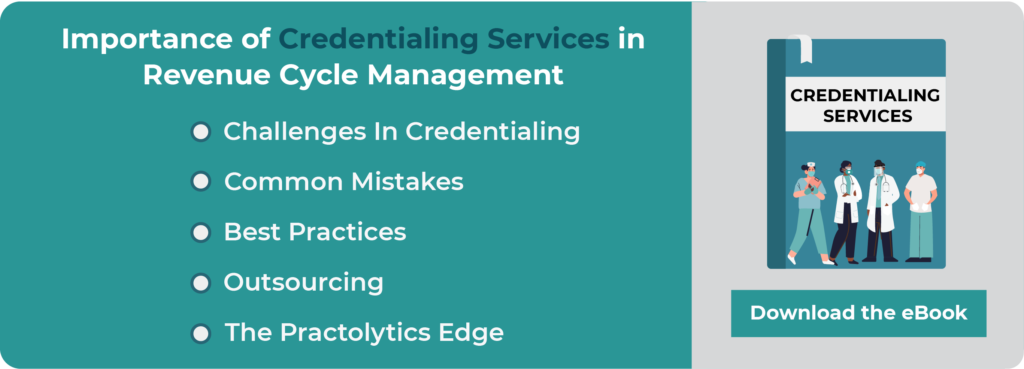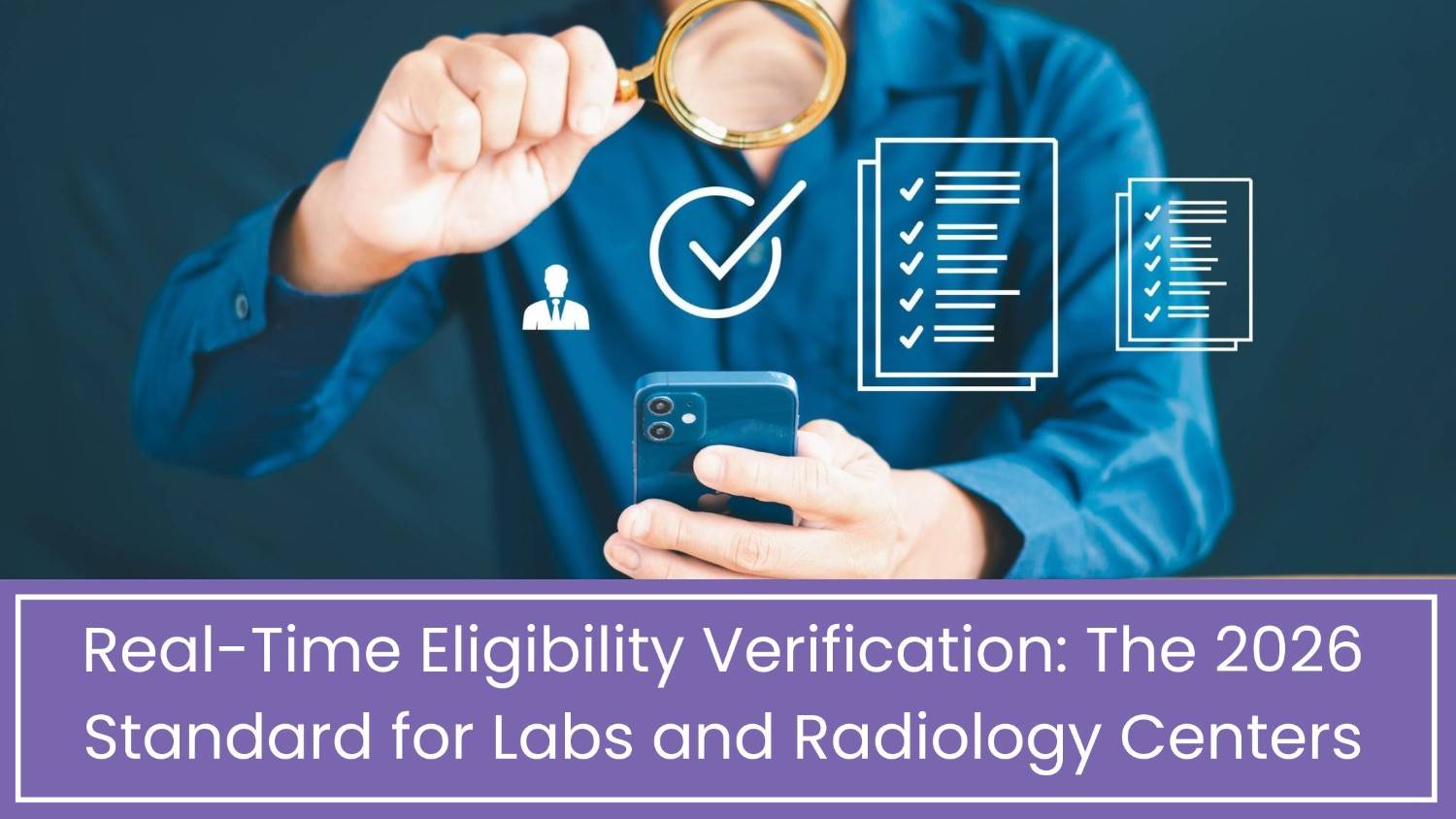How Credentialing Directly Affects Your Insurance Reimbursements
Many of the complex healthcare machinery’s operations take place in the background, but how well they work directly affects a practice’s bottom line. Medical credentialing services is a fundamental and frequently undervalued pillar among these. Although it is frequently seen as solely confirming a healthcare provider’s credentials and proficiency, its significance goes well beyond merely obtaining authorisation to practice. By 2025, a strong and well-managed credentialing procedure is not only required by law but it is also a necessary condition for prompt and correct insurance reimbursements, which have a direct impact on a healthcare organisation’s income and stability.
Credentialing and insurance company payments are directly linked. They are not merely peripheral. Providers need credentialing and payer enrollment to bill for services to insured consumers. Even highly qualified providers cannot bill without these necessary steps. Every healthcare practice needs to prioritise and optimise its credentialing procedure. This is because credentialing is essential.
Table of Contents
Foundation of Reimbursement: No Credentialing, No Payment
Medical Insurance companies and healthcare organisations use the best medical credentialing services to confirm a provider’s credentials. This process ensures providers meet specific requirements. These requirements include licensure, education, and experience. Training, education, licenses, board certifications, employment history, and disciplinary actions are all confirmed through this process. A provider is formally enrolled as a participating provider after successfully completing credentialing. This enrollment signifies that the provider is now part of the payer’s network. This enrollment is the green light for billing.
Think about this: any claims made for services rendered by a provider who visits a patient who has insurance via a specific payer but is not yet credentialed and enrolled with that payer will be rejected. Simply put, the payer does not acknowledge the provider’s authority to charge their members for services. This immediate and absolute denial highlights the critical, foundational role credentialing plays in the entire revenue cycle management. It is the very first step in the journey from patient encounter to payment.
Direct Impacts of Credentialing on Your Revenue Cycle
The financial operations of a practice are affected by the following consequences of a poorly run or postponed medical credentialing process:
- Postponed Onboarding Is Equal to Delayed Revenue: A new provider’s inability to make money right away is one of the most unpleasant and immediate effects of slow credentialing. Billable hours are wasted each day a newly hired doctor, nurse practitioner, or physician assistant waits for credentialing to be completed. This has a direct effect on patient access and the practice’s capacity, which can result in large and swiftly compounding financial losses. A provider might be ready to see patients, but if they cannot bill for those services, their presence becomes a cost center rather than a revenue generator.
- Denials Result from Inaccurate or Incomplete Credentialing: The application process for credentials is infamously meticulous. Even little errors, omissions, or discrepancies in the supporting documents might result in the credentialing application being rejected or, if accepted, in further denials of claims. Claims will bounce back, for example, if a provider’s tax ID or NPI (National Provider Identifier) is linked erroneously during registration. In a similar vein, treatments outside of a provider’s scope of practice may be rejected if their credentialing file with a payer does not appropriately reflect their specialization or subspecialty. Payment is further delayed by the time-consuming rework and appeals necessary for these denials.
- Network participation determines whether a provider is “in-network” with a particular insurance plan. Reimbursement rates are affected by network participation. Being in-network is crucial for attracting patients. Insured individuals prefer to see providers whose services are reimbursed at a higher rate by their plan. In-network providers offer better contract terms and higher reimbursement rates than out-of-network providers. A doctor may be forced to serve patients outside their network due to credentialing delays. This could result in reduced collections and increased patient financial obligations, potentially discouraging follow-up visits.
- Payer Enrollment: The Last Door Payer enrollment is the formal administrative process of adding the provider to the payer’s system and connecting them to certain contracts and price schedules, whereas credentialing confirms qualifications. Before enrollment may take place, credentials must be completed. Any hiccup in the credentialing phase will directly halt the enrollment process, preventing claims from being processed.
- Credentialing is a continuous process. Updates and re-credentialing are part of this ongoing process. Providers are required to regularly update their information with payers on changes in licensure, board certification, practice location, or malpractice insurance. They are also required to undertake periodic re-credentialing, usually every two to three years. If credentials are not kept up to date, billing privileges may be suspended. This suspension could lead to payment delays and revenue loss until the data is updated and re-confirmed. Provider files are regularly audited by payers. Inconsistencies in these files may result in recoupments or payment holds.
- A provider’s credentialing status and negotiated contracts influence fee schedules and reimbursement rates. These factors directly affect the precise fee schedules a provider is eligible for. A provider’s price schedule can be less advantageous due to an incomplete or inaccurate credentialing profile. This can lead to lower reimbursements for services.
- Compliance and Audit Protection are important aspects of regulatory compliance. Appropriate healthcare credentialing services is crucial for these aspects. Strict credentialing rules apply to both private payers and government programs. These rules apply to both private payers and government programs like Medicare and Medicaid. A practice’s revenue would be severely damaged by non-compliance. This can result in harsh penalties, fines, and even removal from federal healthcare programs.An effective credentialing procedure is a preventative measure. It helps to avoid audits and potential reimbursements.
Indirect Impacts on Practice Health
Top Credentialing companies has indirect effects on a practice’s general well-being and expansion in addition to the obvious financial ones:
- Patient Access and Volume: The practice’s capacity to take on new patients covered by those plans is significantly constrained if a practitioner lacks credentialing with major payers. This has a direct effect on patient volume, impeding expansion and market penetration. If their preferred provider is not in their network, patients will just find another one.
- Reputable practices are known for their efficient onboarding and seamless invoicing processes. This practice is also well-known for having a good reputation with patients and recommending physicians. Patients may stop trusting a practice that has billing issues and delays in certifying. Referrals may decline as a result.
- In addition to seeing patients, doctors and other healthcare professionals want to get paid as soon as feasible. They also want to be content with their jobs. Suppliers may become irritated with lengthy and bothersome credentialing procedures. This could have an impact on providers’ retention and make it more challenging to later recruit excellent staff.
Consequences of Neglecting Credentialing Services
The financial and operational fallout from neglecting credentialing is stark:
- Significant revenue loss due to unbillable services and denied claims.
- More administrative expenses as a result of manual follow-up, appeals, and rework.
- Restricted cash flow, which affects the practice’s capacity to grow services, make equipment investments, and pay employees.
- Patient dissatisfaction and potential loss of patients.
- Risk of compliance penalties and audits.
- Damage to the practice’s reputation.
Best Practices for Optimizing Credentialing for Reimbursement
Healthcare practices must take a proactive and careful approach to credentialing in order to protect reimbursements and guarantee financial stability:
- Be Proactive and Start Early: As soon as a new provider is hired, far before their start date, begin the credentialing process.
- Verify all information and supporting materials twice before submitting to ensure accuracy and completeness. Significant delays might result from even small mistakes.
- Leverage Technology: Make use of platforms or specialized credentialing software that track application status, automate data collection, and send out re-credentialing reminders.
- Implement Continuous Monitoring: Don’t just credential and forget. Continuously monitor provider licenses, certifications, and payer statuses to ensure everything remains current.
- Assign Committed Employees or Outsource: Assign a committed, experienced person or group to oversee credentialing, or think about collaborating with a respectable credentialing service provider. Utilizing specialist knowledge and technology can make outsourcing more affordable. This is often a more cost-effective alternative to keeping an internal staff.
- Keep lines of communication open with payer representatives. This ensures requirements are understood and problems are resolved promptly.
- Regularly audit your personal credentialing files. Ensure they are accurate, up-to-date, and complete.
Conclusion:
Medical credentialing is more than an administrative challenge. It is the main source of insurance reimbursements and, as a result, the foundation of any healthcare organization’s financial stability. 2025 acknowledges that a robust revenue cycle and a robust credentialing procedure are directly related. Given the growing complexity of laws and the move toward value-based care, this partnership is essential. Healthcare institutions can use credentialing to improve cash flow. They can also use it to enhance patient access and support long-term growth. This is achieved by investing in effective procedures. Utilizing technology and paying close attention to detail are also key. It is wise to prioritize credentialing. Credentialing is also necessary for revenue.
In 2025, credentialing will be a vital source of income for healthcare organizations like practolytics, making it more than just a formality. This blog discusses the financial ramifications of ignoring or improperly managing this crucial procedure and examines the direct relationship between credentialing and insurance reimbursements. Credentialing mistakes can seriously impair a practice’s cash flow and patient access, resulting in everything from delayed onboarding and claim denials to lower reimbursement rates and problems with network participation. Best practices for maximizing credentialing are also covered in the post, including getting started early, employing specialist tools, keeping up with upgrades, and making sure all documentation is complete. Healthcare providers must treat credentialing as a fundamental revenue cycle activity, whether they manage it internally or through outsourcing. Healthcare Credentialing Services is now a strategic requirement for financial stability and expansion in the regulatory and value-based care environments of today.
Read More – Medical Credentialing Services: A Guide for Healthcare Providers
Talk to Medical Billing Expert Today — Get a Free Demo Now!






